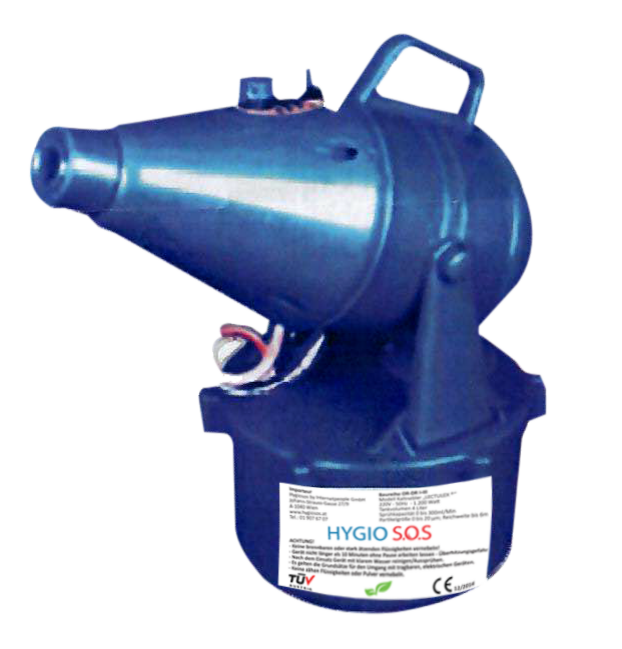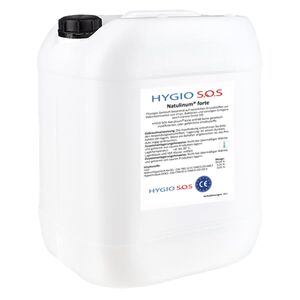BIOLOGICAL AND NATURAL RESOURCES

HYGIO S.O.S Natulinum® forte
Use of biological and natural means
The ingredients of most disinfectants have harmful effects on people (e.g. skin) and the environment, or side effects and create resistance. HYGIO S.O.S takes a different approach.
Disinfection is an essential part of antiseptic work. According to the German Pharmacopoeia (DAB), disinfection means: "to put dead or living material in a condition that it can no longer infect". Chemical or physical methods can be used for disinfection.
HYGIO S.O.S specializes in eliminating germs without the use of toxins (poisons) or alcohol. Replacing one problem with another problem is not the way of HYGIO S.O.S. Therefore, HYGIO S.O.S has specialized in the use of non-toxic processes and agents with raw materials that are as natural as possible.
In doing so, we focus in particular on not only eliminating germs, but also on using agents that are biodegradable or even made from natural raw materials.
DRY FOGGING
With COMPREXX dry fogging you can reach all surfaces, objects, devices and rooms.
HYGIO S.O.S Natulinum forte
Composition / information on ingredients / mode of action
Chemical characterization: Liquid mixture based on electro-activated water. HYGIO S.O.S Natulinum does not contain any genetically modified and dangerous ingredients. Active chlorine (Na OCL) released from hypochlorous acid.

| Stoffe: Stoffname: | CASNr.: | Anteil | Konzentration | Symbol | R-Sätze S-Sätze |
H2O | 7732-18-5 | 99,68% | 8,0g/L | Xi | R52/53 S2/13 BIOZIDLISTUNG |
Mode of Operation
Hypochlorous acid plays an important role in the human and animal immune systems, killing pathogens through oxidation. The immune system of humans and animals form oxchlorine molecules like hypochlorous acid. The hypochlorous acid has the property of decomposing cell walls of unicellular microorganisms, such as bacteria and viruses, in that reactive oxygen species denature the proteins of the pathogenic cell walls. The increased internal pressure of the pathogenic cell walls causes them to burst. Through the physiological process, hypochlorous acid can also be produced outside the human body. The hypochlorous acid is non-toxic. It does not cause irritation, even if ingested it does not cause any harm. Due to its neutral charge, it is not rejected by bacteria and can easily penetrate the cell walls of the bacteria and kill them.
Possible Dangers
Classification of the mixture
Classification according to Regulation (EC) No. 1272/2008, Annex VII (substances): not dangerous.
Classification according to Regulation (EC) No. 1272/2008, Annex VII (substances): not dangerous.

Marking elements
Labeling elements according to Regulation (EC) No. 1272/2008 (substances)/ Directive 1999/4 5EG pictogram/ hazard symbol: none.
Signal word/ hazard designation: not applicable
Hazardous components for labelling: not applicable
Hazard warnings: not applicable
Safety instructions: not applicable
Other hazards: none
Constituent Comment:
neutral (pH 7.0 up to 7.5) electrochemically activated saline solution. Contains no organic substances, in particular no VOC and substances from the SVHC list of the REACH regulation.Physico-Chemical Hazards: Reacts with acids liberating chlorine gas
Human Health Hazards: Not a hazardous material
Environmental Hazards
Disposal of larger quantities into the sewage without pre-treatment can affect microorganisms.
